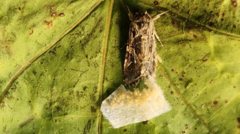According to a recent study from Tel Aviv University, plants may communicate distress through sounds that are inaudible to humans but perceptible to certain animals. The research, led by Professor Yossi Yovel, is groundbreaking in showing how female moths respond to sounds made by tomato plants when they are unhealthy. Two years ago, scientists discovered that stressed plants produce noises, leading to this latest revelation about animal behavior.
During controlled experiments, it was found that moths avoided laying their eggs on tomato plants making distress sounds. This reaction hints at a potential complex network of decision-making among various species based on auditory signals from plants. "It’s possible that many animals might alter their behaviors, like whether to pollinate, hide, or consume plants, based on what they hear," Professor Yovel stated.
Further investigations will explore the range of sounds different plants make, and whether they can send information to other plants in response to environmental stressors. Professor Lilach Hadany emphasized the significance of understanding these interactions: "What if plants can warn each other about drought through sound?"
Crucially, the researchers noted that while plants produce these sounds only under certain conditions, they are not sentient beings. The study specifies that this newfound communication avenue may foster mutual benefits that have evolved over time, leading to a fascinating ecosystem interaction yet to be fully understood.
As the first steps into this "vast, unexplored field" progress, the implications for both botanical and zoological research could be significant. By focusing on moths in their recent experiments, scientists uncovered the intriguing dynamics between plant health and animal behavior, now documented in the journal eLife.
During controlled experiments, it was found that moths avoided laying their eggs on tomato plants making distress sounds. This reaction hints at a potential complex network of decision-making among various species based on auditory signals from plants. "It’s possible that many animals might alter their behaviors, like whether to pollinate, hide, or consume plants, based on what they hear," Professor Yovel stated.
Further investigations will explore the range of sounds different plants make, and whether they can send information to other plants in response to environmental stressors. Professor Lilach Hadany emphasized the significance of understanding these interactions: "What if plants can warn each other about drought through sound?"
Crucially, the researchers noted that while plants produce these sounds only under certain conditions, they are not sentient beings. The study specifies that this newfound communication avenue may foster mutual benefits that have evolved over time, leading to a fascinating ecosystem interaction yet to be fully understood.
As the first steps into this "vast, unexplored field" progress, the implications for both botanical and zoological research could be significant. By focusing on moths in their recent experiments, scientists uncovered the intriguing dynamics between plant health and animal behavior, now documented in the journal eLife.






















